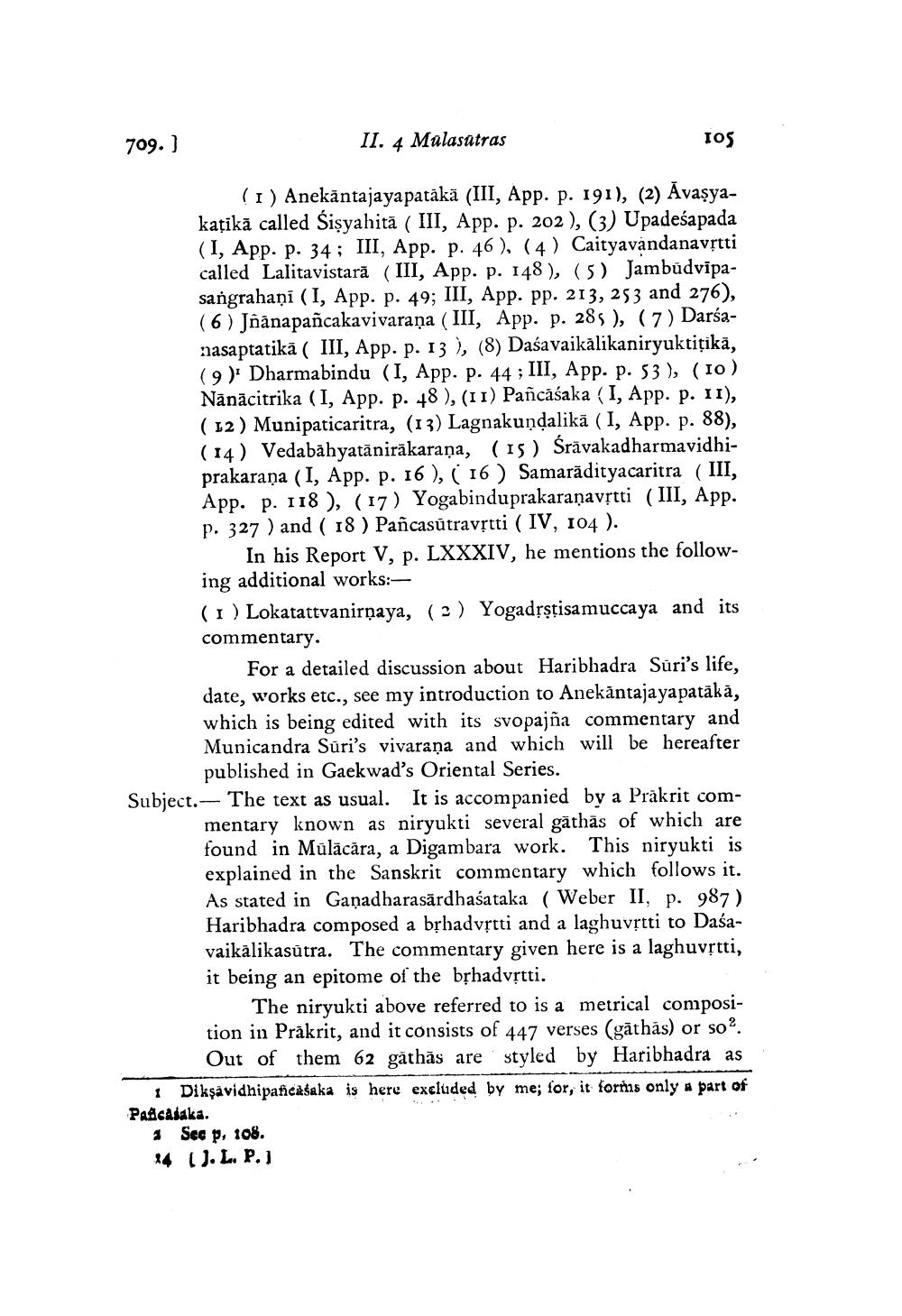________________
709.]
II. 4 Malasutras
(1) Anekāntajayapatākā (III, App. p. 191), (2) Avaṣyakatika called Sisyahita ( III, App. p. 202), (3) Upadeśapada (I, App. p. 34; III, App. p. 46), (4) Caityavandanavṛtti called Lalitavistara (III, App. p. 148), (5) Jambudvipasangrahani (I, App. p. 49; III, App. pp. 213, 253 and 276), (6) Jñānapañcakavivarana (III, App. p. 285), (7) Darśanasaptatikā ( III, App. p. 13), (8) Daśavaikālikaniryuktițikā, (9) Dharmabindu (I, App. p. 44; III, App. p. 53), (10) Nānācitrika (I, App. p. 48), (11) Pañcāśaka (I, App. p. 11), (12) Munipaticaritra, (13) Lagnakuṇḍalika (I, App. p. 88), (14) Vedabahyatānirākaraṇa, (15) Śravakadharmavidhiprakarana (I, App. p. 16), (16) Samaradityacaritra (III, App. p. 118), (17) Yogabinduprakaraṇavṛtti (III, App. p. 327 ) and ( 18 ) Pañcasūtravṛtti ( IV, 104 ).
τος
In his Report V, p. LXXXIV, he mentions the following additional works:(1) Lokatattvanirṇaya, (2) Yogadṛṣṭisamuccaya and its
commentary.
For a detailed discussion about Haribhadra Suri's life, date, works etc., see my introduction to Anekantajayapatākā, which is being edited with its svopajña commentary and Municandra Suri's vivarana and which will be hereafter published in Gaekwad's Oriental Series.
Subject. The text as usual. It is accompanied by a Prakrit commentary known as niryukti several gathas of which are found in Mulacăra, a Digambara work. This niryukti is explained in the Sanskrit commentary which follows it. As stated in Gaṇadharasardhasataka (Weber II, p. 987) Haribhadra composed a bṛhadvṛtti and a laghuvṛtti to Daśavaikālikasūtra. The commentary given here is a laghuvṛtti, it being an epitome of the bṛhadvṛtti.
The niryukti above referred to is a metrical composition in Prakrit, and it consists of 447 verses (gāthās) or so2. Out of them 62 gathās are styled by Haribhadra as Dikşavidhipaficasaka is here excluded by me; for, it forms only a part of
Pañcasaka.
2 See p. 108.
14 []. L. P.]




